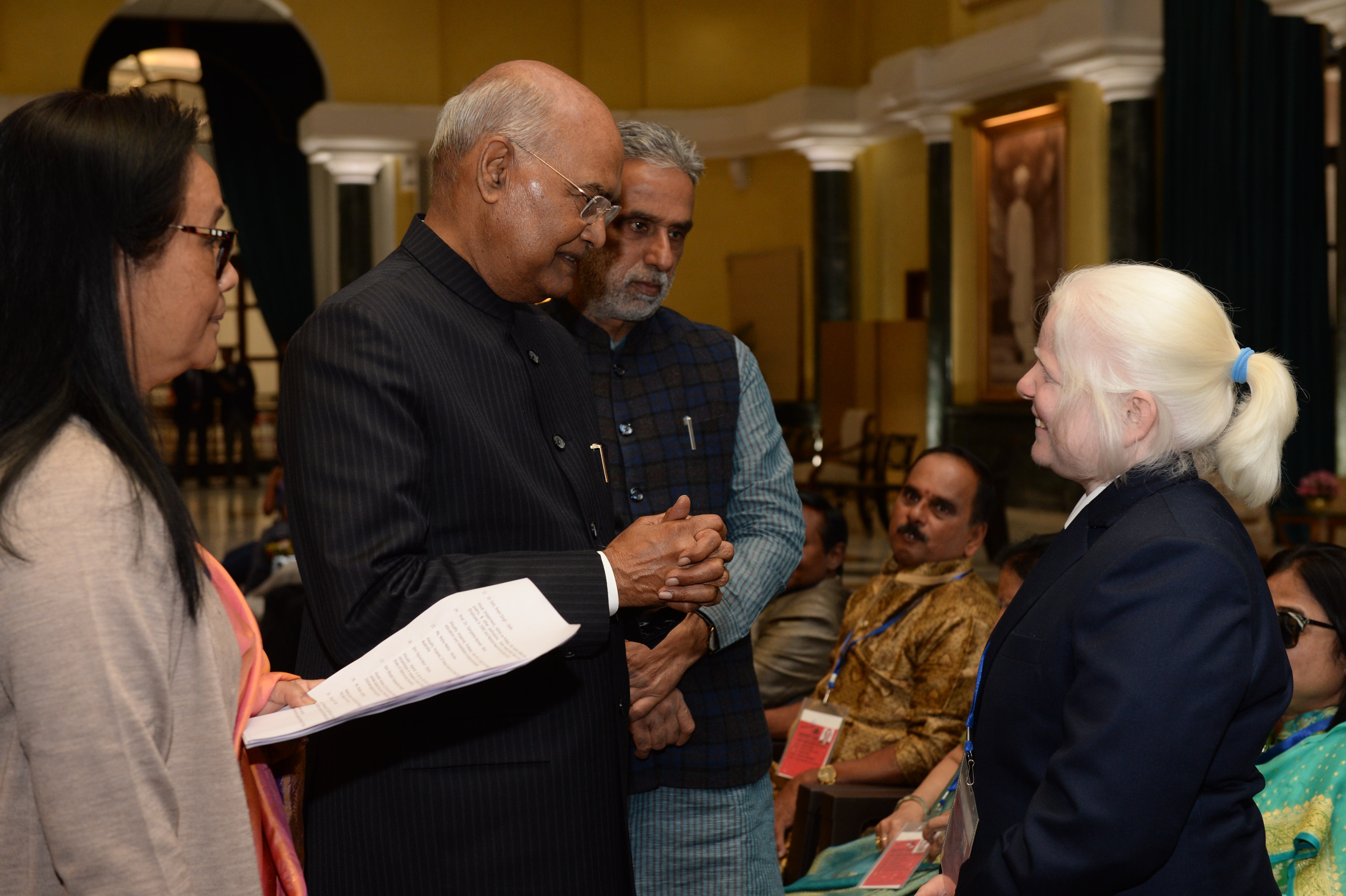
Health & Medicine
Becoming a STEM-inist

PhD student Nisha Mehta was born with albinism. With support from her parents and educators she has overcome many challenges to pursue an award-winning career in chemistry
Published 22 April 2020
When I was born, my parents were super surprised. They had never seen a child with albinism, and they could not understand what had happened. But they always loved and supported me.
I grew up in a city in the Indian state of Haryana, near Delhi. There were so many social issues because of my different appearance, and I didn’t get accepted in society.
I have a vision impairment and my parents didn’t know how to help. They tried their best, but they felt sad because whenever we went to doctors, they said, “We have no solution for that.”

My academic life has been very challenging because of my vision impairment. But a strong determination, my parents’ love and educator’s support helped me to overcome every challenge.
I earned an Honours degree in Chemistry from one of the best institutions in India, St Stephen’s College, which belongs to Delhi University. I followed this with a Masters in Chemistry from the Indian Institute of Technology Kanpur (IIT-Kanpur).

Health & Medicine
Becoming a STEM-inist
I received a number of awards and honours for academic excellence during my studies. These included the Sangeeta Predham Memorial Medal for the most outstanding graduating Master of Science student, and the Dr Elizabeth and Dr Verkey Cherian Award for Best Project at the summer undergraduate research and graduate excellence program, to name few examples.
I wanted to pursue my love for chemistry, so I moved to the University of Melbourne to do a PhD with Dr Lars Goerigk. My studies here in Melbourne are supported by the Melbourne International Engagement award through the Melbourne India Postgraduate Program.
The broad aim of my PhD is to assess the applicability of density-functional theory (DFT) approximations. DFT has become the most important electronic-structure calculation tool both in the computational/theoretical chemistry as well as in the experimental community.
The latter use it to validate their findings and predict experimentally challenging and unexplored questions. As such, DFT plays an important role in the synthesis of new molecules and materials. Density-functional theory (DFT) approximations are readily available in many quantum chemistry programs.

Many high-impact studies rely on DFT, but they often ignore that the field is more complex than it seems. Despite being popular and easily available, people have to rely on approximations to the unknown true model.
A large number of these approximations have been developed, each with their own advantages and disadvantages. Therefore, the field is full of misconceptions, suffers from confusion in the user community, low-acceptance rate of newly developed methods and, ultimately, the high risk of providing the wrong answer to a research question.
In the first project of my PhD, we addressed some of these risks and misconceptions. This work is one of the largest and most thorough DFT benchmarking studies in existence, and allowed us to clean up the ever-growing ‘zoo’ of DFT methods. We identified a handful of computational strategies that distinguish themselves in terms of their accuracy and reliability.
This study identifies the most accurate density functionals, and so impacts the general chemistry community beyond my own specialised field. Our work was very well received by reviewers, published as a front-cover article in one of the leading journals in my field, Physical Chemistry Chemical Physics (PCCP), and made it into the ‘2018 PCCP HOT article’ themed collection.
It immediately went to the top 25 per cent of all research outputs scored by Altmetrics (which tracks the attention that research is getting) and was acknowledged with two poster prizes at the fifth Royal Society of Chemistry Twitter Poster Conference, which reached more than two million viewers.
We also presented a new analysis of the openly available data published in Swart and co-workers’ famous annual DFT poll (an online poll that asks the DFT community to identify their preferences among the many approximations that are available.)

We demonstrated that there is a communication gap between the DFT user and developer communities. We showed that despite considerable methodological advances in the field, the perception of some parts of the user community regarding their favourite approaches has changed little since 2010.
Now that we have identified the most reliable and fast DFT approximations, we are using these to gain computational insights into various chemical systems that have proven difficult to explore experimentally. These results are providing an insightful understanding and useful guidance for future synthesis of various chemical systems.

Sciences & Technology
Smashing through science’s glass ceiling
On International Day of Persons with Disabilities last December, I had the great honour to receive the National Award for Empowerment of Persons with Disabilities. This award was in the category of Role Model in a presidential ceremony in India.
This award is for all those who have supported me, including my friends, supervisor Dr Lars Goerigk, parents Sunita Mehta and Ved Prakash Mehta, and brother Sourabh Mehta.
This moment is to tell the world – “Yes, I look different, my eyesight is weak, but my vision is strong.”
- As told to Dr Daryl Holland.
Banner: Getty Images